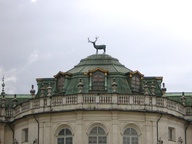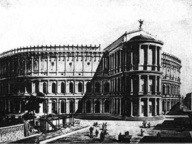Farnaz Damnabi. Unveiled
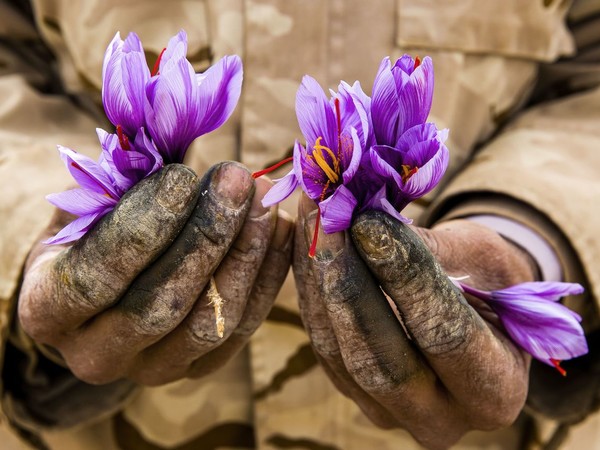
© Farnaz Damnabi | Farnaz Damnabi, Saffron worker, 2022. Courtesy of 29 ARTS IN PROGRESS gallery
From 22 Maggio 2023 to 28 Luglio 2023
Milan
Place: 29 ARTS IN PROGRESS gallery
Address: Via San Vittore 13
Times: Tuesday – Friday, 11 am – 7 pm (free entry) | Open on Saturday 27 May (11 am- 7 pm) Closed every Saturday in June and July 2023
Telefono per informazioni: +39 02 94387188
E-Mail info: staff@29artsinprogress.com
Official site: http://29artsinprogress.com
29 ARTS IN PROGRESS gallery is delighted to present the first personal exhibition of the young Iranian Artist Farnaz Damnabi, from 23rd May to 28th July 2023.
The exhibition is entitled ‘UNVEILED’ and it brings together a selection of works that tell visitors the tale – as refined as it is powerful – of a young female photographer from contemporary Iran, suspended between past and future.
Women play the absolute starring role in her shots: Damnabi both illustrates and pays tribute to the Iranian female identity, which is shown here in the routine of women, mothers and workers ignored by a strictly patriarchal society, which is so late to recognise their equality, value, and freedom.
Many of the photographs on display highlight issues such as discrimination against women in the labour market, the gender gap in salaries, and the failure to recognise their silent contribution to key sectors of the Iranian economy and craft industry (such as the harvesting of saffron in the fields of Torbat-e Heydarieh or the production of carpets).
In her Lost Paradise series, female figures are portrayed from behind in front of a traditional Persian rug and appear to blend in – and almost merge – with the background, a metaphor for both their optical and social invisibility.
Some of her most famous reportage, which is both poetic and dramatic, is dedicated to children
and has the dual purpose not only of showing the difficulties of a childhood spent in this country, but also the ability – typical of youngsters – to find magic even in the most adverse circumstances because, as the emblematic title of one of her projects reminds us, Playing is my right.
Women, children and teenagers also crowd the shots in her Metamorphosis series: a veritable collection of suspended moments, scenes of everyday life, rituals, garments and emblematic traditions of Iran. With her recent project Be like a Butterfly, the artist documents the attempt made by the younger generations of women to improve their condition, marking changes so slow and tardy that they seem imperceptible, comparing them to the same metamorphosis that chrysalides undergo to become butterflies.
In the highly personal and moving account she makes of her homeland, Damnabi also documents the experiment of the new city erected a few kilometres from Tehran.
Sadly ironically called Pardis (Paradise), it was intended to reverse the migration of the most densely populated cities; the mass construction of new buildings has, however, led to the devastation of the mountain ecosystem and the destruction of its natural habitat, making connections to the capital even worse. The pictures on display, that are part of the namesake Pardis series, appear somewhat suspended between reality and dream and show the bleak outlook of a ‘lunar landscape’ – as defined by the Artist herself – of a Paradise denied and which is in fact a dormitory district where a great many workers and most of the poorest families simply survive, in ghettos deprived of the most basic amenities.
Damnabi’s photographs turn Iran’s unheard voices into images: they are the stories of women, marginalised from all aspects of the society in which they live; the stories of children, deprived of the inalienable right to a carefree childhood; they are the stories, all things considered, of all the invisible Iranians who have always been relegated to the farthest confines, both geographical and social.
The aim of her portraits is not to be controversial but rather representative, showing us with her own eyes a world which we are certainly aware of, but which now touches us more intensely and to the core.
Among these tales of isolation, loss and exclusion, Farnaz Damnabi’s young voice rises with refined elegance as a shout of indignation combined with trust.
Her photographs are concurrently delicate and powerful and while they impress us, they above all force us to see, to reflect, and to hope alongside her.
The exhibition will open to the public on Monday, 22 May from 5 pm.
Farnaz Damnabi was born in Teheran, Iran in 1994.
After graduating in Graphic Design and completing a Master’s in Photography at the University of Art in Tehran, she became a freelance photographer and a Main Member of the National Iranian Photographers’ Society (NIPS).
She has exhibited in international shows and has received numerous awards and acknowledgements including the Honorable mention at the Golden Orchid International Photo Festival (USA) in 2017. The same year, she won the first edition of the PABA International Photo Competition (Washington DC, USA) and in 2018 she came first in the 10th edition of the Global Photography Contest in China. In 2019, she received an honorable mention at the Hahnemühle Student Photo Contest in Germany and was one of the winners of the UNPUBLISHED PHOTO contest; since 2020 some shots from her ‘Playing is my right’ series have become part of the permanent collection at MUSEC, Museo delle Culture in Lugano, Switzerland.
Photography is an opportunity for her to look around and pay attention to what others might not notice.
She currently lives and works in Teheran.
The exhibition is entitled ‘UNVEILED’ and it brings together a selection of works that tell visitors the tale – as refined as it is powerful – of a young female photographer from contemporary Iran, suspended between past and future.
Women play the absolute starring role in her shots: Damnabi both illustrates and pays tribute to the Iranian female identity, which is shown here in the routine of women, mothers and workers ignored by a strictly patriarchal society, which is so late to recognise their equality, value, and freedom.
Many of the photographs on display highlight issues such as discrimination against women in the labour market, the gender gap in salaries, and the failure to recognise their silent contribution to key sectors of the Iranian economy and craft industry (such as the harvesting of saffron in the fields of Torbat-e Heydarieh or the production of carpets).
In her Lost Paradise series, female figures are portrayed from behind in front of a traditional Persian rug and appear to blend in – and almost merge – with the background, a metaphor for both their optical and social invisibility.
Some of her most famous reportage, which is both poetic and dramatic, is dedicated to children
and has the dual purpose not only of showing the difficulties of a childhood spent in this country, but also the ability – typical of youngsters – to find magic even in the most adverse circumstances because, as the emblematic title of one of her projects reminds us, Playing is my right.
Women, children and teenagers also crowd the shots in her Metamorphosis series: a veritable collection of suspended moments, scenes of everyday life, rituals, garments and emblematic traditions of Iran. With her recent project Be like a Butterfly, the artist documents the attempt made by the younger generations of women to improve their condition, marking changes so slow and tardy that they seem imperceptible, comparing them to the same metamorphosis that chrysalides undergo to become butterflies.
In the highly personal and moving account she makes of her homeland, Damnabi also documents the experiment of the new city erected a few kilometres from Tehran.
Sadly ironically called Pardis (Paradise), it was intended to reverse the migration of the most densely populated cities; the mass construction of new buildings has, however, led to the devastation of the mountain ecosystem and the destruction of its natural habitat, making connections to the capital even worse. The pictures on display, that are part of the namesake Pardis series, appear somewhat suspended between reality and dream and show the bleak outlook of a ‘lunar landscape’ – as defined by the Artist herself – of a Paradise denied and which is in fact a dormitory district where a great many workers and most of the poorest families simply survive, in ghettos deprived of the most basic amenities.
Damnabi’s photographs turn Iran’s unheard voices into images: they are the stories of women, marginalised from all aspects of the society in which they live; the stories of children, deprived of the inalienable right to a carefree childhood; they are the stories, all things considered, of all the invisible Iranians who have always been relegated to the farthest confines, both geographical and social.
The aim of her portraits is not to be controversial but rather representative, showing us with her own eyes a world which we are certainly aware of, but which now touches us more intensely and to the core.
Among these tales of isolation, loss and exclusion, Farnaz Damnabi’s young voice rises with refined elegance as a shout of indignation combined with trust.
Her photographs are concurrently delicate and powerful and while they impress us, they above all force us to see, to reflect, and to hope alongside her.
The exhibition will open to the public on Monday, 22 May from 5 pm.
Farnaz Damnabi was born in Teheran, Iran in 1994.
After graduating in Graphic Design and completing a Master’s in Photography at the University of Art in Tehran, she became a freelance photographer and a Main Member of the National Iranian Photographers’ Society (NIPS).
She has exhibited in international shows and has received numerous awards and acknowledgements including the Honorable mention at the Golden Orchid International Photo Festival (USA) in 2017. The same year, she won the first edition of the PABA International Photo Competition (Washington DC, USA) and in 2018 she came first in the 10th edition of the Global Photography Contest in China. In 2019, she received an honorable mention at the Hahnemühle Student Photo Contest in Germany and was one of the winners of the UNPUBLISHED PHOTO contest; since 2020 some shots from her ‘Playing is my right’ series have become part of the permanent collection at MUSEC, Museo delle Culture in Lugano, Switzerland.
Photography is an opportunity for her to look around and pay attention to what others might not notice.
She currently lives and works in Teheran.
SCARICA IL COMUNICATO IN PDF
COMMENTI

-
 Dal 31 gennaio 2024 al 04 maggio 2025
Fermo | Palazzo dei Priori
Dal 31 gennaio 2024 al 04 maggio 2025
Fermo | Palazzo dei Priori
-
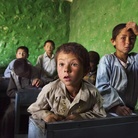 Dal 20 dicembre 2024 al 04 maggio 2025
Fermo | Palazzo dei Priori
Dal 20 dicembre 2024 al 04 maggio 2025
Fermo | Palazzo dei Priori
-
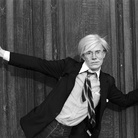 Dal 20 dicembre 2024 al 04 maggio 2024
Gorizia | Palazzo Attems Petzenstein
Dal 20 dicembre 2024 al 04 maggio 2024
Gorizia | Palazzo Attems Petzenstein
-
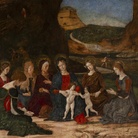 Dal 18 dicembre 2024 al 18 dicembre 2024
Venezia | Museo Correr
Dal 18 dicembre 2024 al 18 dicembre 2024
Venezia | Museo Correr
-
 Dal 14 dicembre 2024 al 02 marzo 2025
Palermo | Palazzo Abatellis
Dal 14 dicembre 2024 al 02 marzo 2025
Palermo | Palazzo Abatellis
-
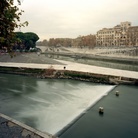 Dal 12 dicembre 2024 al 23 febbraio 2025
Roma | Palazzo Altemps
Dal 12 dicembre 2024 al 23 febbraio 2025
Roma | Palazzo Altemps

